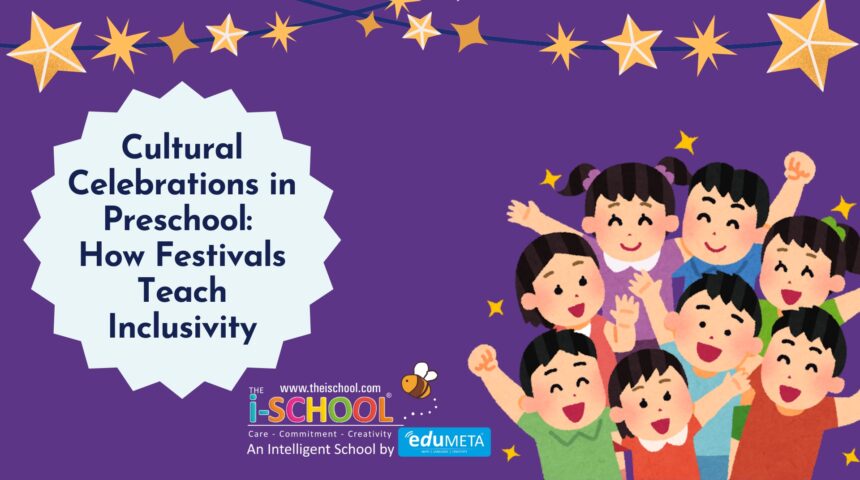Cultural Celebrations in Preschool: How Festivals Teach Inclusivity

In today’s diverse world, teaching children about inclusivity and respect for different cultures is more important than ever. One of the most effective ways to instill these values in young minds is through cultural celebrations in preschool. By introducing children to various festivals and traditions, we can create an environment of acceptance and understanding, helping them appreciate the beauty of diversity from an early age.
The Role of Festivals in Early Education
Festivals are more than just occasions for celebration; they are opportunities for learning and growth. In a preschool setting, festivals offer a hands-on way for children to explore different cultures, traditions, and beliefs. This exposure is crucial in helping them understand that the world is made up of many different people, each with their unique ways of life.
When children participate in cultural celebrations, they learn about the significance of these events and the values they represent. Whether it’s Diwali, Christmas, Eid, Hanukkah, or Lunar New Year, each festival teaches lessons about community, gratitude, sharing, and compassion. These values are universal, and by celebrating them together, children learn that despite our differences, we are all connected by common human experiences.
Teaching Inclusivity Through Participation
Involving children in the celebration of various festivals helps to foster a sense of inclusivity. When children see their own culture represented and respected in the classroom, they feel a sense of pride and belonging. Similarly, when they participate in the celebrations of others, they learn to respect and appreciate the differences between people.
Here are some ways that cultural celebrations in preschool can teach inclusivity:
- Storytelling and Discussions: Teachers can share stories about the origins and meanings of different festivals, encouraging children to ask questions and share their own experiences. This promotes a deeper understanding of why people celebrate and what those celebrations mean.
- Creative Activities: Art, music, and dance are integral parts of many cultural celebrations. By involving children in these activities, they not only learn about different traditions but also get to express themselves creatively. Making crafts, singing songs, or learning a traditional dance from another culture can be a fun and engaging way to introduce children to new ideas.
- Food and Traditions: Food is a key element of many festivals, and sharing a traditional meal or snack can be a powerful way to teach children about different cultures. It’s an opportunity to explore new tastes and learn about the significance of certain foods in different cultural contexts.
- Role-Playing and Dress-Up: Allowing children to dress in traditional clothing or participate in role-playing activities related to different festivals helps them to immerse themselves in the cultural experience. It’s a fun and tangible way for them to connect with the traditions of others.
Building a Respectful and Inclusive Environment
Cultural celebrations in preschool are not just about having fun; they are about building an environment where every child feels respected and valued. When children learn about and celebrate the festivals of their peers, they develop empathy and understanding. They begin to see that while we may have different ways of celebrating, the underlying values—such as love, joy, and family—are the same.
Teachers play a crucial role in this process. By carefully selecting and planning cultural celebrations, they can ensure that all children feel included and that no one culture is given precedence over another. It’s important to approach these celebrations with sensitivity and to encourage children to share their own cultural practices, ensuring that everyone’s traditions are honored.
The Lasting Impact of Early Inclusivity Education
The lessons learned through cultural celebrations in preschool extend far beyond the classroom. Children who grow up in an environment that values diversity and inclusivity are more likely to carry those values into adulthood. They become more open-minded, empathetic, and capable of working in diverse environments.
Moreover, these early experiences with inclusivity can help to reduce prejudice and build stronger, more connected communities. When children learn to appreciate and celebrate differences from a young age, they are more likely to become adults who advocate for inclusivity and respect in all areas of life.
Conclusion: Celebrating Diversity, Building Community
Cultural celebrations in preschool are a powerful tool for teaching inclusivity. By embracing and celebrating the diverse traditions of our world, we help children develop a sense of respect and appreciation for all cultures. These celebrations teach them that diversity is not something to be feared, but something to be celebrated—a source of strength and beauty in our shared human experience.
As we guide young minds through these celebrations, we are not just teaching them about different festivals; we are teaching them to build a more inclusive, compassionate world, one celebration at a time.
